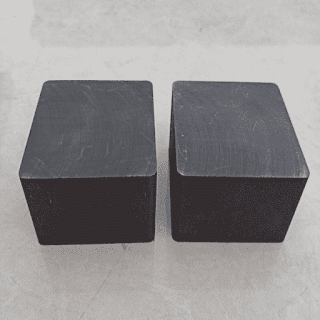Comparison of anode paste and electrode paste
Anode paste is the predecessor of preparing anodes in electrolyzers in aluminum plants.
In the 40 years before 1995, the anode paste was once the largest product in China's aluminum carbon products. After 2000, this product will gradually be replaced by anode carbon blocks. It is the product with the largest output among carbon products.
The anode paste is a carbon paste made of petroleum coke and pitch coke as aggregates and coal tar pitch as a binder. It is used as anode material for continuous self-baking aluminum electrolytic cell. Because of its high content of binder (more than 24%), it is paste-like before the upper part of the electrolytic cell is sintered, so it is called anode paste.
The prepared anode is not only capable of good electrical conductivity, but also resistant to high temperature and corrosion, and at the same time the price is low.
The resistivity of the preliminary anode is 50-70 μΩ.m, plus the lead and contact resistance, during normal aluminum electrolysis production, the voltage drop on the carbon anode consumed is 300-500mV, which accounts for 10%-15 of the electrolytic cell voltage drop %.

The index of the anode paste is similar to that of the electrode paste. It is the conductive material used by the aluminum factory as the anode, also called the self-baking anode. This kind of anode paste has great limitations, and it is not easy to operate for aluminum plants, which is time-consuming and labor-intensive. Because the anode paste needs to be energized and heated after the furnace is installed, this period of time is relatively large for the factory and wastes additional energy. Therefore, with the development of preliminary anodes, the anode paste has been eliminated since the 1990s. Up.

Comments
Post a Comment